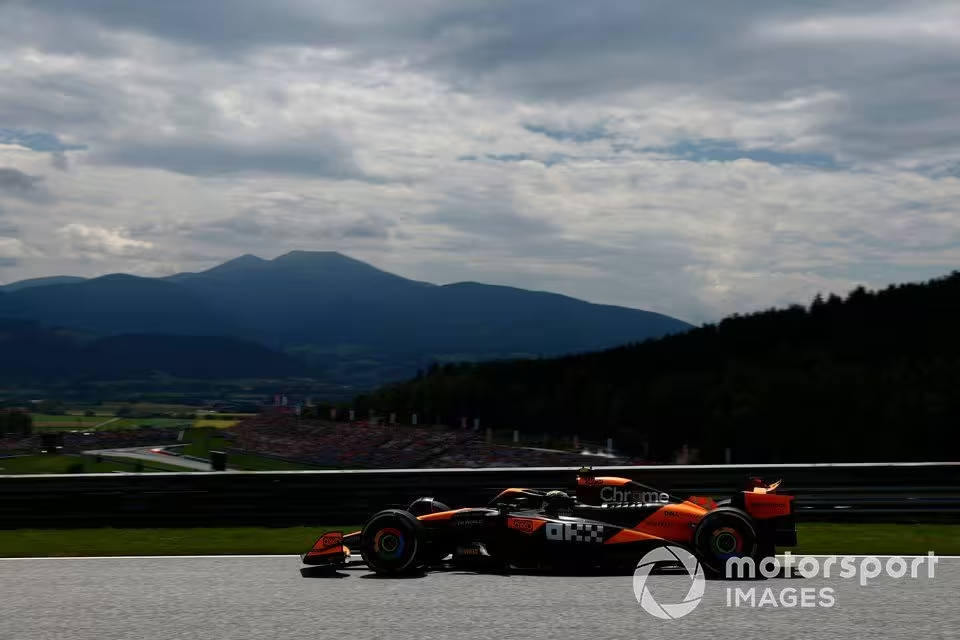A scant 0.093 seconds separated Max Verstappen and Lando Norris in their Austrian Grand Prix sprint qualifying laps, as the two once again start on the front row.
The duo were separated by less than two tenths throughout their sole SQ3 laps, the gap only growing between them during the mid-corner phase, and the superior traction of the McLaren out of corners could only mitigate the gap rather than turn the tide.
In consulting the GPS data, a similar pattern to their ultimate qualifying efforts in Barcelona emerged, although this time Norris was unable to eclipse Verstappen.
Like Spain, Verstappen carried more speed into the braking zone; the Red Bull topped out at around 2-3mph faster than Norris’ McLaren before decelerating. But Norris shed less speed on the brakes, ultimately taking a little more through the corner.
The tractive force behind the McLaren seems stronger too, allowing Norris to reclaim the bulk of the time he’d lost on the corner exits. After Turn 1, Norris brought their delta down to 0.013s as he went up the hill, but the Red Bull’s greater top-end speed ensured that Verstappen overlapped Norris’ speed trace about two-thirds of the way up the hill.
At around 197mph, Norris started to run out of steam, while Verstappen could keep the speedometer rising before getting onto the brake pedal. This continued into the next straight between Turns 3 and 4; Norris got time back by the middle of the stretch at the top of the hill, but not all of it, and this was a source of tiny fragments that added up to the lap delta between the two drivers.
Lando Norris, McLaren MCL38
Photo by: Zak Mauger / Motorsport Images
This could be due to a few factors: earlier clipping from the Mercedes powertrain, an enhanced DRS effect from the Red Bull on the straights, or simply a matter of gearing.
Equally, the McLaren’s marginally higher speed through the short-radius corners could be explained with the car having more downforce at low speeds, or through stronger compliance against the stiffly sprung Red Bull.
The gap opens up a bit more in the latter half of the lap, as the corners are a bit more flowing and allow the Red Bull to swing towards its medium-high speed performance.
Again, the McLaren is generally better on the corner exit, although Verstappen hits the throttle harder through Turn 9 as Norris is slightly more tentative. Bringing Oscar Piastri’s lap into contention as well, the Australian is a little more…
Click Here to Read the Full Original Article at Motorsport.com – Formula 1 – Stories…

